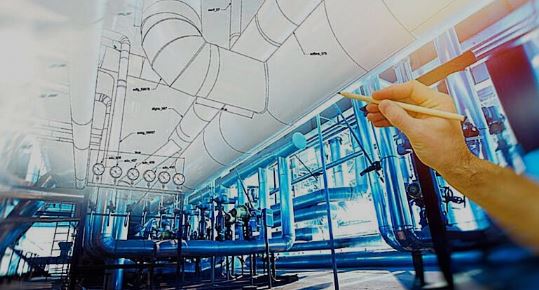The Impact of Texas Weather on MEP System Strategies
MEP System Strategies
Designing resilient MEP systems in Texas means understanding the state’s unpredictable weather. From scorching summers to sudden storms and winter freezes, these conditions create serious challenges. Engineers and designers must develop systems that can handle this variability while staying efficient and reliable.
This blog explores how Texas weather influences MEP system strategies. You’ll discover key practices—from using strong materials to adopting adaptive technologies—that help buildings thrive despite harsh conditions. Let’s uncover how effective MEP design and climate resilience go hand in hand.
1. Introduction to MEP Systems and Resilience
In building design, MEP systems—Mechanical, Electrical, and Plumbing—are the foundation of comfort, safety, and functionality. These systems are critical to performance, especially in a state like Texas where extreme weather is common.
As climate patterns grow more unpredictable, resilient MEP design becomes essential. Resilience means a system can withstand and adapt to extreme events like heatwaves, heavy rain, and sudden freezes. Texas regularly experiences weather extremes—from intense heat that stresses cooling systems to storms that can knock out power and disrupt plumbing.
2. Understanding Texas Weather Patterns
To design resilient MEP systems, engineers must understand Texas’s unique and variable weather. The climate differs across regions and changes drastically by season. Sweltering summers and icy winters both affect how buildings function.
In summer, temperatures often exceed 100°F. This puts huge pressure on cooling systems, which must be both efficient and properly sized. High humidity adds to the challenge, requiring good ventilation and dehumidification.
Winters can bring unexpected cold snaps, especially in northern and central regions. These drops in temperature test heating systems and can damage unprotected pipes. Ice accumulation also poses risks to external equipment and structures.
3. The Importance of Resilience in MEP Design
Weather in Texas can shift from intense heat to heavy storms within hours. MEP systems must be built to handle these shifts. Resilient design ensures continued operation during extreme events and reduces downtime.
A resilient MEP system uses strong materials, efficient technology, and redundant components. These features help buildings recover quickly after disruptions. For example, backup power systems keep operations running during outages, especially in hospitals and data centers.
4. Key Weather Challenges Faced in Texas
Texas is renowned for its diverse and often extreme weather conditions, which can pose significant challenges for Mechanical, Electrical, and Plumbing (MEP) systems. Understanding these challenges is crucial for designing resilient systems that can withstand the state’s unique climate.
One of the most pressing weather challenges is the intense heat that blankets much of the state during the summer months. With temperatures frequently soaring above 100°F, the strain on cooling systems can be immense. MEP designs must prioritize energy efficiency and robust cooling strategies, ensuring that HVAC systems are capable of maintaining comfortable indoor environments without incurring exorbitant energy costs.
In addition to the heat, Texas is also susceptible to severe storms, including thunderstorms, hail, and tornadoes. These events can lead to power outages and damage to infrastructure. To combat this, MEP systems need to be designed with redundancy in mind. Backup generators and uninterruptible power supply (UPS) systems are essential for critical operations, particularly in healthcare facilities and data centers.
5. Analyzing Historical Weather Events and Their Impacts
When it comes to designing resilient Mechanical, Electrical, and Plumbing (MEP) systems in Texas, understanding the historical weather events that have shaped the region is crucial. Texas is known for its diverse climate, which can range from scorching summers to unpredictable storms and occasional winter freezes. By analyzing past weather events, engineers and designers can gain valuable insights into how these conditions impact MEP systems and develop strategies that enhance resilience.
For instance, consider the severe thunderstorms that frequently occur during Texas’s spring months. These storms can bring heavy rainfall, high winds, and even hail, posing significant threats to building systems. Reviewing historical data reveals that inadequate drainage systems have led to flooding in commercial and residential properties, resulting in costly repairs and downtime. By recognizing these patterns, designers can implement advanced drainage solutions and waterproofing techniques to mitigate potential damage.
6. MEP System Components and Their Vulnerabilities
When considering the impact of Texas weather on Mechanical, Electrical, and Plumbing (MEP) systems, it’s crucial to understand the specific components that make up these systems and their associated vulnerabilities. Texas is known for its extreme weather conditions, which can range from sweltering heat and humidity during the summer months to unexpected winter storms that bring ice and snow. Each of these elements poses unique challenges to MEP systems, necessitating a thorough examination of their components.
7. Strategies for Climate-Resilient MEP Design
Designing climate-resilient Mechanical, Electrical, and Plumbing (MEP) systems is essential for navigating the unpredictable and often severe weather patterns that Texas is known for. From sweltering summers to tumultuous storms, the challenges are manifold, but with strategic planning, engineers can create systems that not only withstand the elements but also promote sustainability and efficiency.
Embrace Energy Efficiency: The first step in climate-resilient MEP design is incorporating energy-efficient systems. Utilizing high-efficiency HVAC units, LED lighting, and smart building technologies can reduce energy consumption and operational costs while ensuring that buildings remain comfortable during extreme conditions. For instance, integrating programmable thermostats can help manage energy use effectively, adapting to fluctuating temperatures and occupancy levels.
Invest in Robust Materials: The choice of materials plays a critical role in the longevity and resilience of MEP systems. Selecting weather-resistant, high-durability materials can protect against corrosion, moisture infiltration, and physical damage from severe weather. For example, using galvanized steel for plumbing systems can extend their lifespan and maintain functionality during heavy rain or flooding.
Prioritize Flood Mitigation: With Texas experiencing an increase in heavy rainfall and flooding, designing MEP systems with flood resilience in mind is crucial. Elevating electrical panels above expected flood levels and using sealed conduits for wiring can help prevent damage. Additionally, incorporating sump pumps and drainage systems can redirect excess water away from critical infrastructure, safeguarding both the systems and the building’s occupants.
8. Incorporating Flexibility in MEP Systems
In the dynamic landscape of Texas, where weather patterns can shift dramatically from scorching heat to sudden storms, incorporating flexibility into Mechanical, Electrical, and Plumbing (MEP) systems is paramount. Flexibility in design not only ensures that these systems can adapt to immediate weather changes but also enhances their long-term resilience against the unpredictable climate fluctuations characteristic of the region.
One of the most effective strategies for achieving this flexibility is through the use of modular components in MEP systems. Modular designs allow for easy upgrades or replacements as technology advances or as the building’s needs evolve. For instance, variable refrigerant flow (VRF) systems can be tailored to adjust cooling and heating loads on demand, ensuring optimal comfort without excessive energy consumption. This adaptability not only supports energy efficiency but also contributes to the longevity of the system.
Moreover, integrating smart technology into MEP systems can provide real-time data and analytics, enabling building managers to make informed decisions based on current weather conditions. For example, smart thermostats can adjust heating and cooling settings in anticipation of temperature changes, while advanced plumbing systems can detect leaks or blockages, allowing for quick responses to potential issues exacerbated by heavy rains or freezing temperatures.
9. Case Studies: Successful Resilient MEP Designs in Texas
In the face of Texas’s unpredictable weather patterns, several innovative MEP (Mechanical, Electrical, and Plumbing) system designs have emerged as benchmarks of resilience. These case studies not only showcase the ingenuity of engineers and designers but also provide valuable lessons for future projects.
One notable example is the **Texas A&M University – Galveston Campus**, which has implemented advanced MEP systems to withstand severe weather events, including hurricanes and flooding. The design incorporates elevated mechanical rooms, reinforced plumbing networks, and energy-efficient electrical systems that are strategically placed to minimize damage during storms. The campus’s adaptive approach ensures that even in the worst conditions, essential services remain operational, demonstrating a commitment to safety and sustainability.
10. Collaboration with Local Experts and Engineers
When it comes to designing resilient Mechanical, Electrical, and Plumbing (MEP) systems in Texas, collaboration with local experts and engineers is not just beneficial—it’s essential. The state’s diverse climate and extreme weather conditions require a tailored approach that only those with regional experience can provide. Local engineers and specialists possess invaluable insights into the unique challenges posed by Texas weather, from scorching summer heat to unpredictable storms and occasional freezing temperatures.
Engaging with these professionals early in the design process allows for the integration of strategies that are specifically adapted to withstand local conditions. For instance, their familiarity with the types of HVAC systems that perform best in high humidity or their understanding of drainage systems that can mitigate flooding risks can significantly enhance the resilience of your building.
In conclusion, understanding the intricate relationship between Texas weather and MEP (Mechanical, Electrical, and Plumbing) system design is crucial for developing resilient strategies that can withstand the state’s unique climatic challenges. As we’ve explored, incorporating adaptive design principles, choosing durable materials, and implementing smart technology can significantly enhance the reliability of MEP systems in the face of unpredictable weather patterns. By prioritizing resilience in your designs, you not only protect your investments but also create safe, comfortable environments for occupants. As Texas continues to experience extreme weather events, the need for innovative and robust MEP solutions will only grow. We encourage you to take these insights and strategies to heart, ensuring that your designs can weather any storm, literally and figuratively, while fostering sustainable and resilient communities across the Lone Star State.
Visit : https://gdiengdesign.com/gdiengdesign-mep/
Learn more: https://www.me.utexas.edu/images/research/SECO_Project_FINAL_20221108_V2.pdf

















































